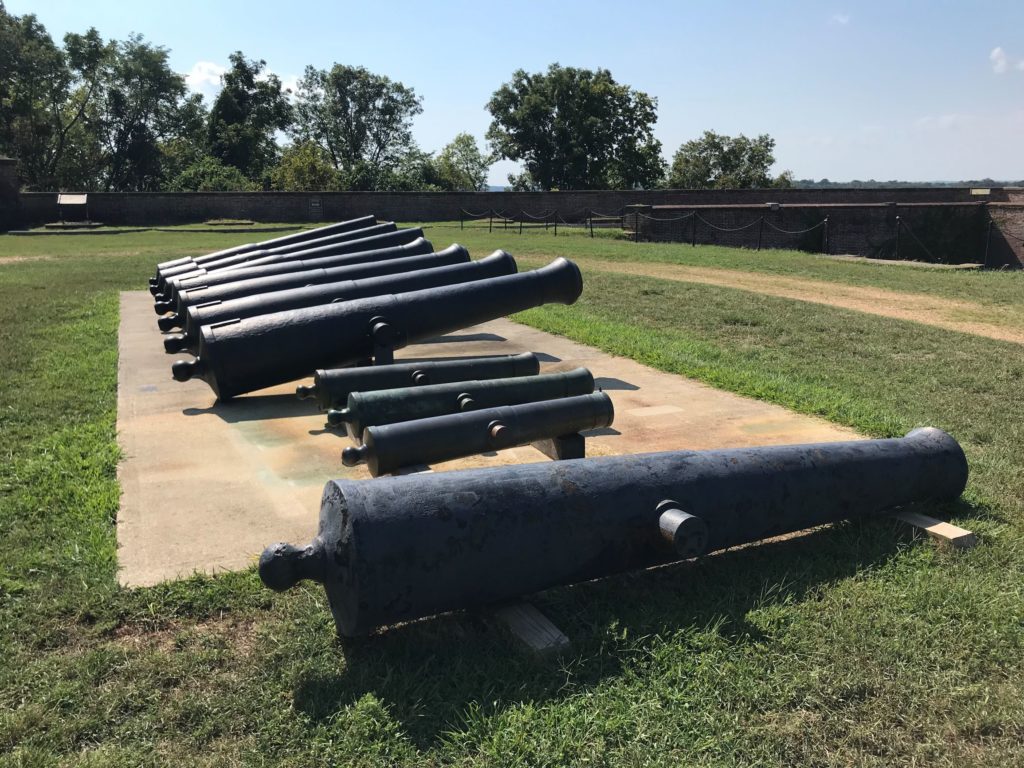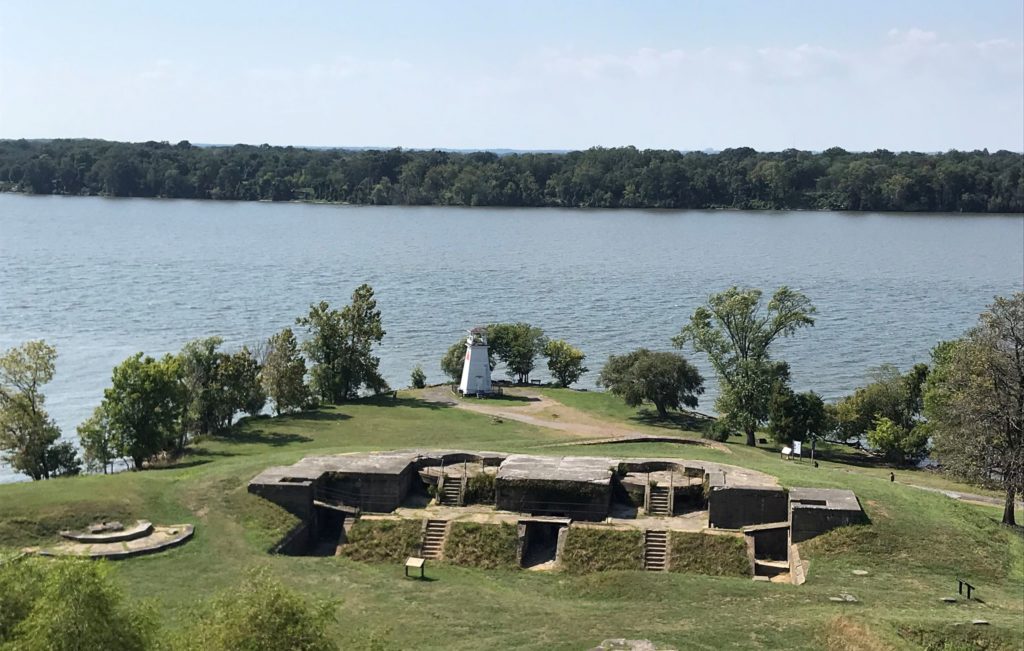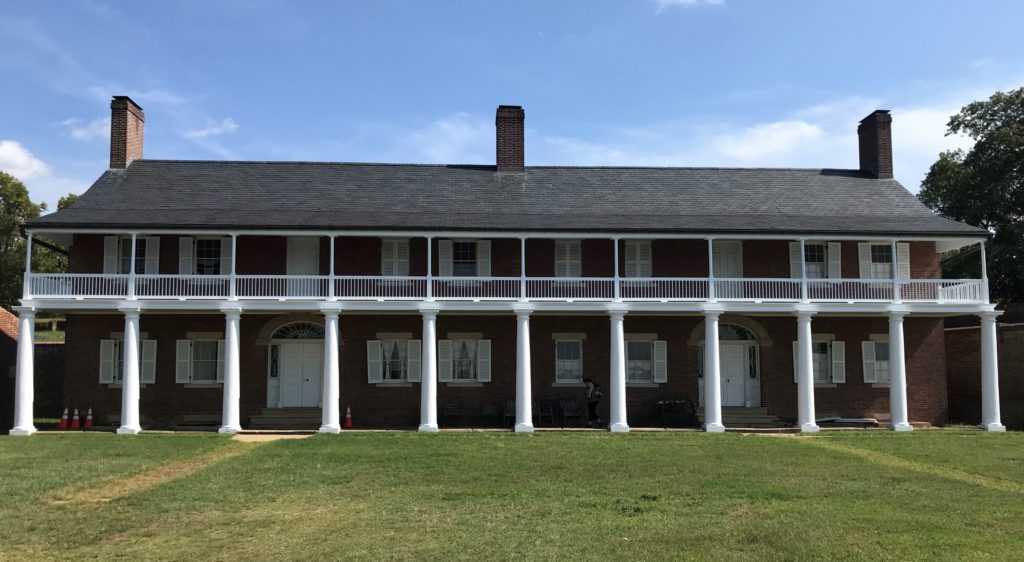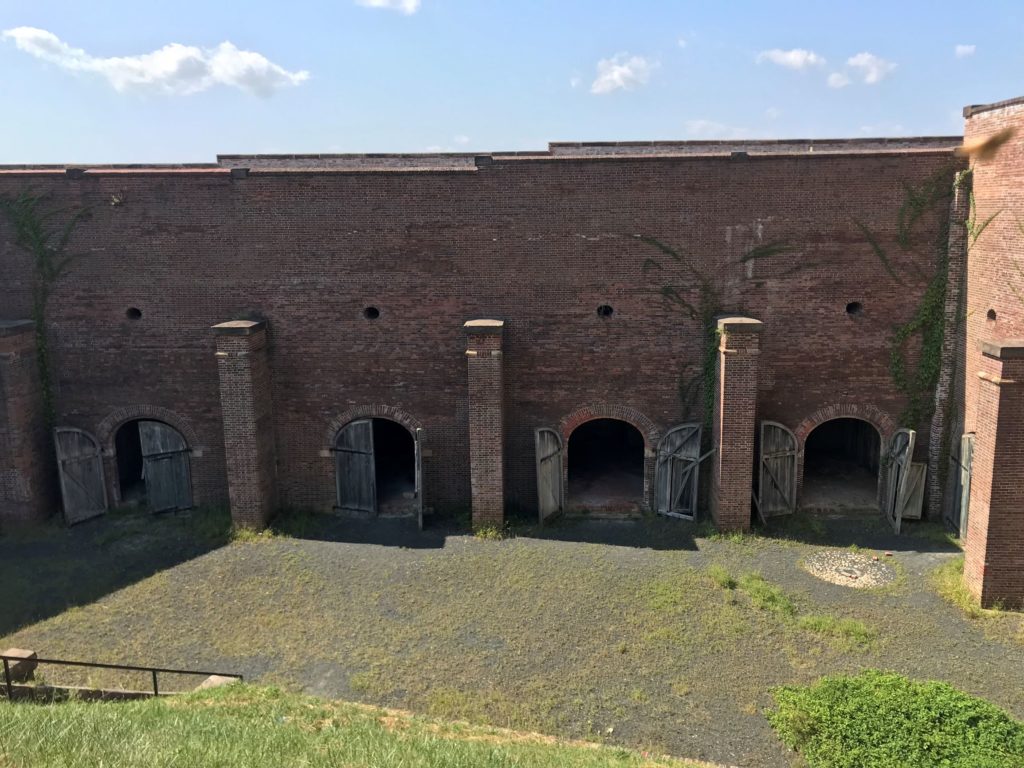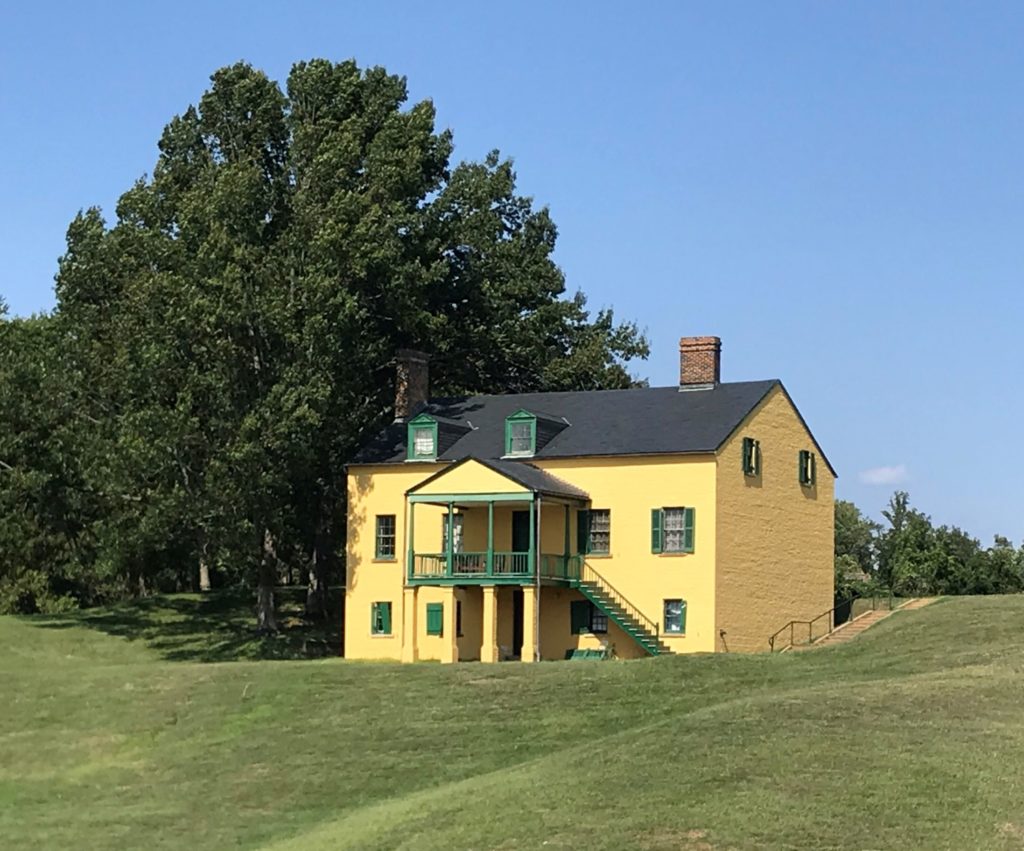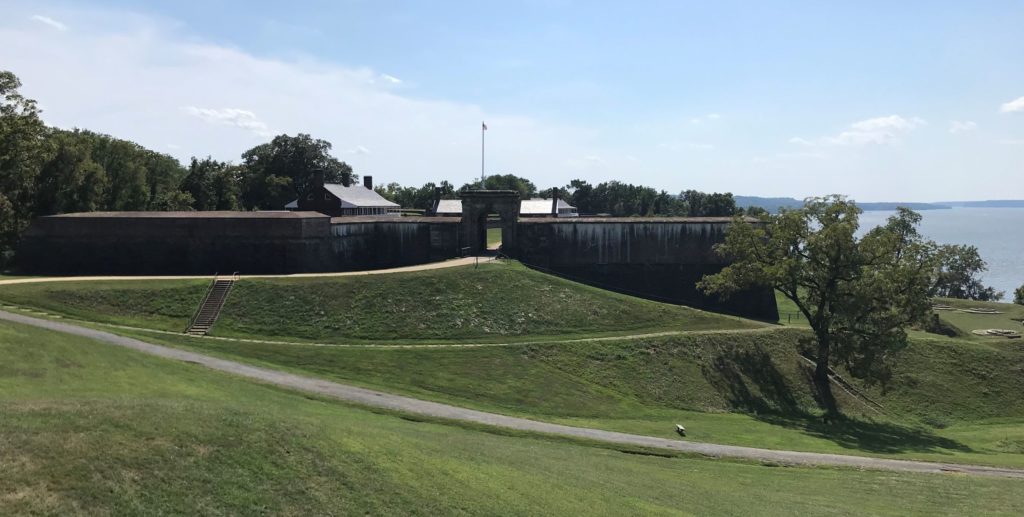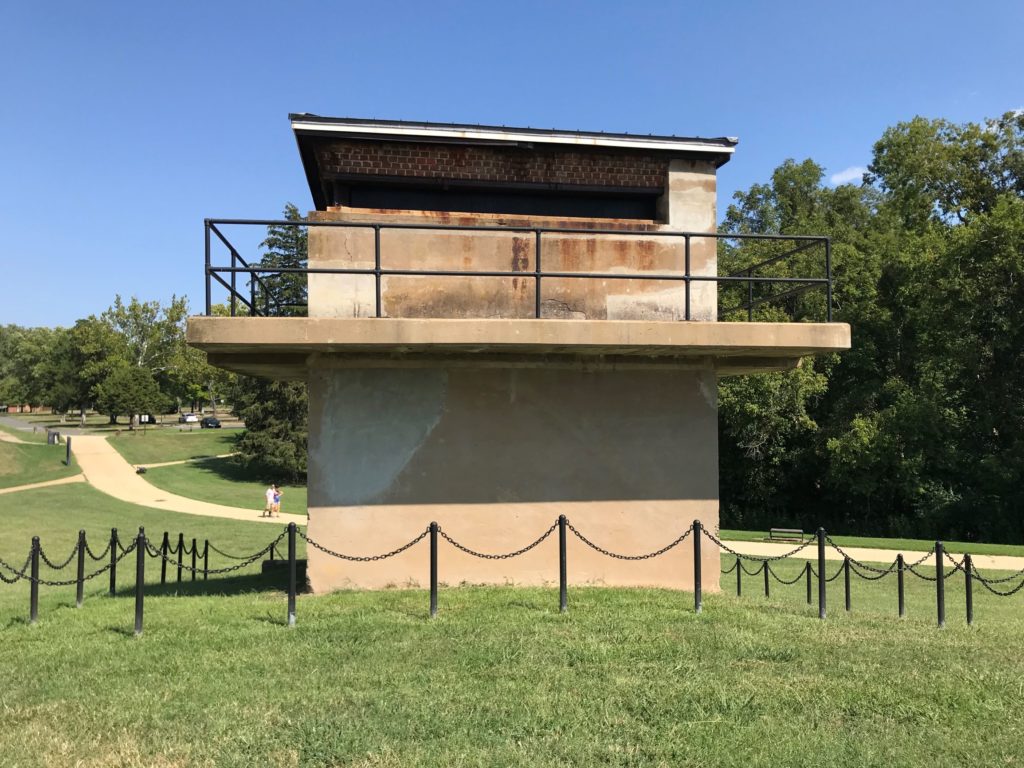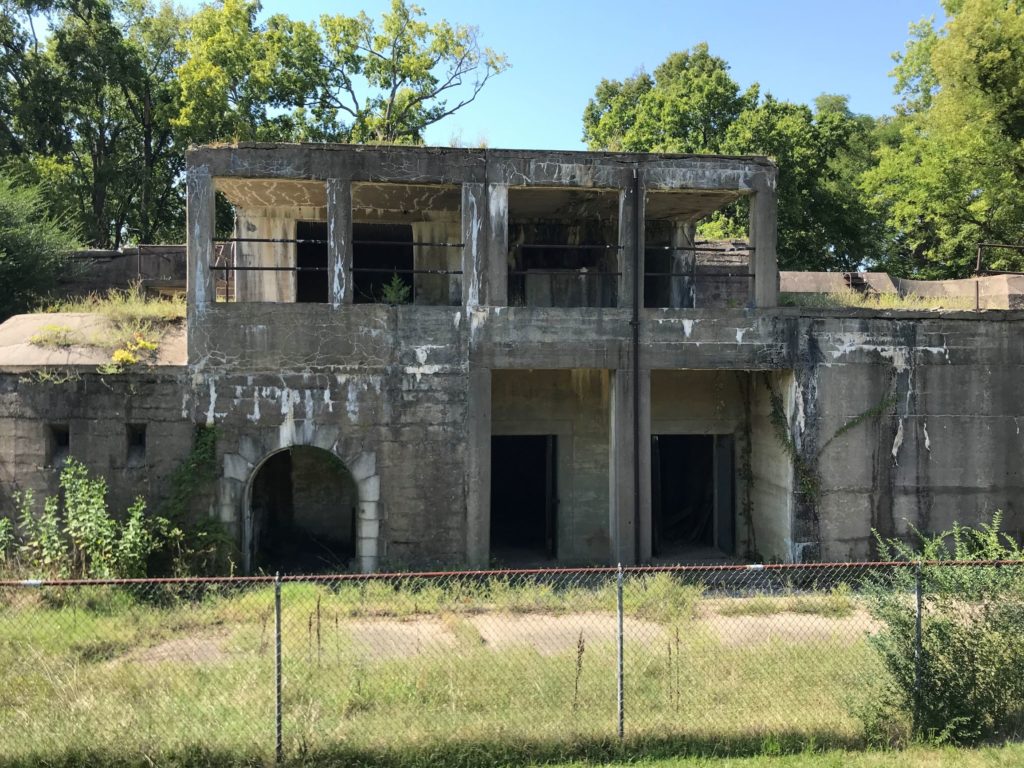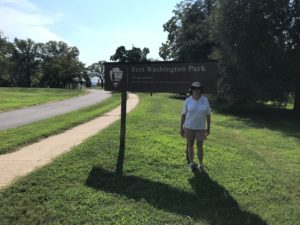 On the day Tom and I visited Mount Vernon, we also drove across the Potomac River to visit Fort Washington and Piscataway Park. Both are located on the east side of the river on the Maryland peninsula. Once you head south of I-495, the area feels rural, almost as if it is a long way from DC.
On the day Tom and I visited Mount Vernon, we also drove across the Potomac River to visit Fort Washington and Piscataway Park. Both are located on the east side of the river on the Maryland peninsula. Once you head south of I-495, the area feels rural, almost as if it is a long way from DC.
Fort Washington Park is one of the series of forts built for coastal defense in the early 1800’s. It’s position at the mouth of the Potomac leading into DC made it an ideal protection for the capital. Unfortunately, when the British decided to attack DC during the War of 1812, the captain of the fort decided he was hopelessly outgunned and burned the fort without firing a single cannon. For that, Captain Samuel Dyson was court-martialed.
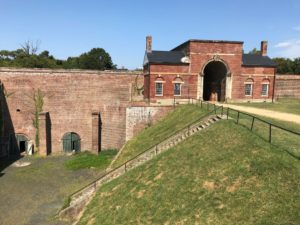 Soon after Captain Dyson burned down the fort, it was built again, but this time out of brick. Today this impressive brick fortress still stands guard over the mouth of the Potomac. During the Civil War, Fort Washington was an important deterrent to a Confederate attack on Washington DC. After the Civil War, the fort was fortified with Rodman guns and mortars that could penetrate iron plating on ships. Concrete casemates were added in 1897. Electricity and telephones were added a year later.
Soon after Captain Dyson burned down the fort, it was built again, but this time out of brick. Today this impressive brick fortress still stands guard over the mouth of the Potomac. During the Civil War, Fort Washington was an important deterrent to a Confederate attack on Washington DC. After the Civil War, the fort was fortified with Rodman guns and mortars that could penetrate iron plating on ships. Concrete casemates were added in 1897. Electricity and telephones were added a year later.
During World Wars I and II, additional buildings were constructed to house soldiers training and preparing to ship overseas. After World War II, Fort Washington was turned over to the Department of the Interior and became a National Park site.
Tom and I started our visit at the Visitors Center where we checked out the small museum and watched an old film-strip movie. Then we went on a Ranger Tour. We were the only two on the tour, and Ranger Bambi answered questions and conversed with us instead of giving us a tour. She showed us the jail cells, the casemates, and talked about the different levels and fortifications built over the 150 years of fort use. She didn’t seem very enthusiastic about it, but it was 95 degrees and sunny and we were all hot. We went from shaded area to shaded area.
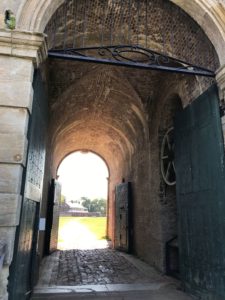
Once our tour was over, Tom and I walked down to the Potomac River and a small lighthouse on the shore. There were several people fishing in the shade of the trees along the river and other people hiking around the fort.
Tom and I enjoyed our visit to Fort Washington but were sad that the place looked so rundown. Doors were missing or coming off their hinges. None of the buildings inside the fort were open because they have not been restored and the balconies were unstable. Ranger Bambi hoped they would get money to make repairs soon. I hope so too. This is a beautiful location and an important story related to our nation’s capital.


